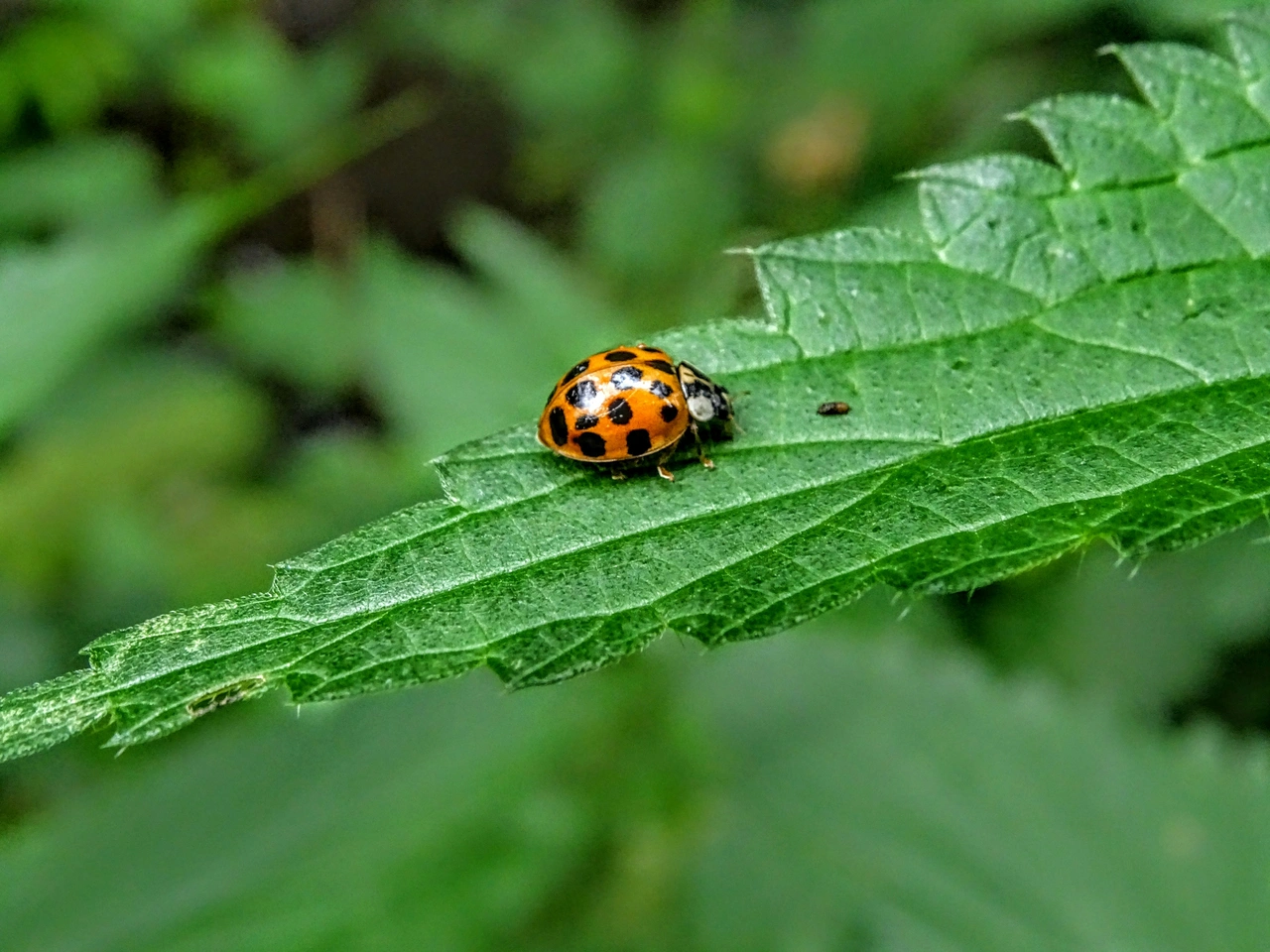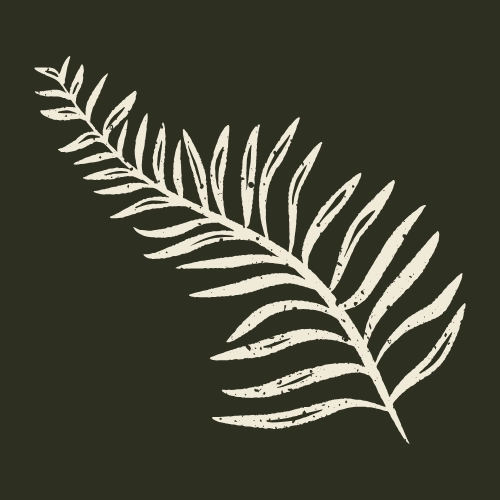You noticed something doesn’t look right in your garden, and upon taking a closer look you may have thought ”there are bugs in my garden”! Before starting any treatment on your plants, it is important to properly identify the cause of damage, and then act accordingly.
A small number of pests are responsible for the majority of damage done to your garden plants. You will also find these pests are prevalent on your ornamental houseplants. Today we are diving into plant pest identification and common bugs in the garden!
It is important to note not all bugs are harmful to your plant. Butterflies and bees will pollinate your flowers and increase fruit production. While lady bugs, spiders, and the praying mantis are nature’s pest control and will feed on the harmful pests.
Lastly, it is important to note when treating your plants with insecticidal soap, to use an organic option with edible plants in your garden, and to always treat outside peak sun hours to avoid damaging your plants.
Here are 7 common garden pests you may find indoors, outdoors, and even on your balcony!
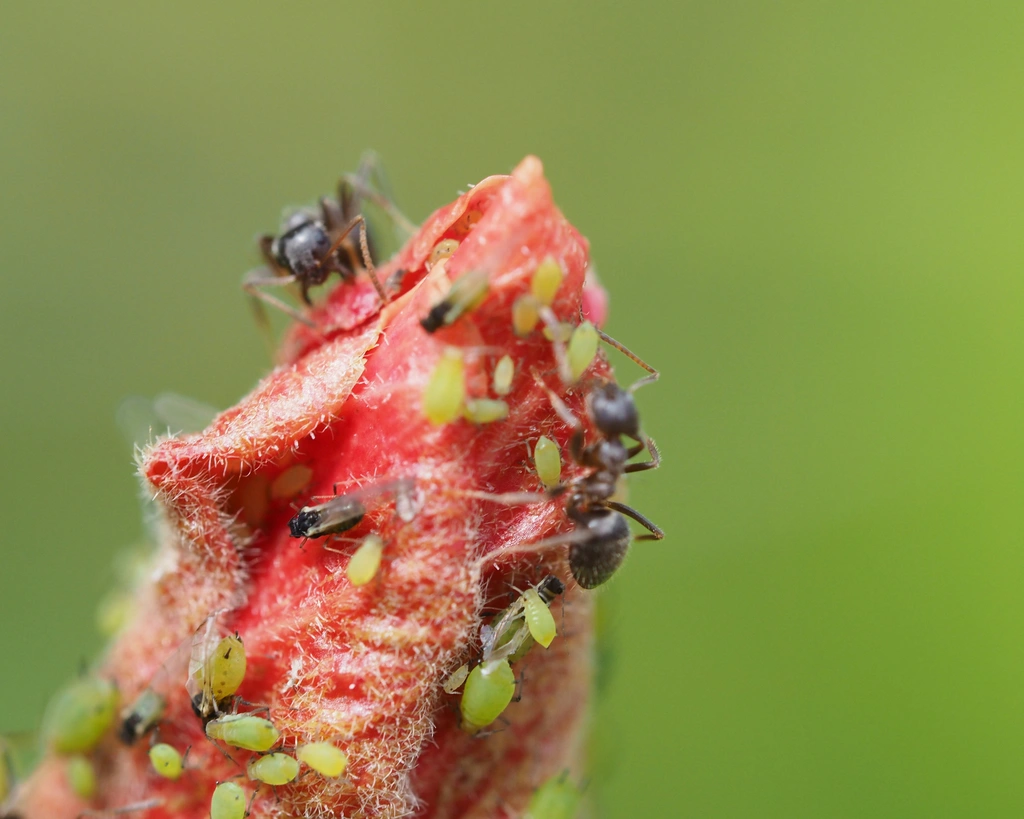
1. Aphids
Appearance: Aphids are the little green bugs on plants you may be noticing. Less commonly they can be different colours. Difficult to spot, they often blend in with the stems and plant foliage.
Damage: Curled, misshapen yellowing leaves. Aphids suck the juice from plants and cause stunted growth and discolouration.
Treatment: Insecticidal spray once per week until treated.
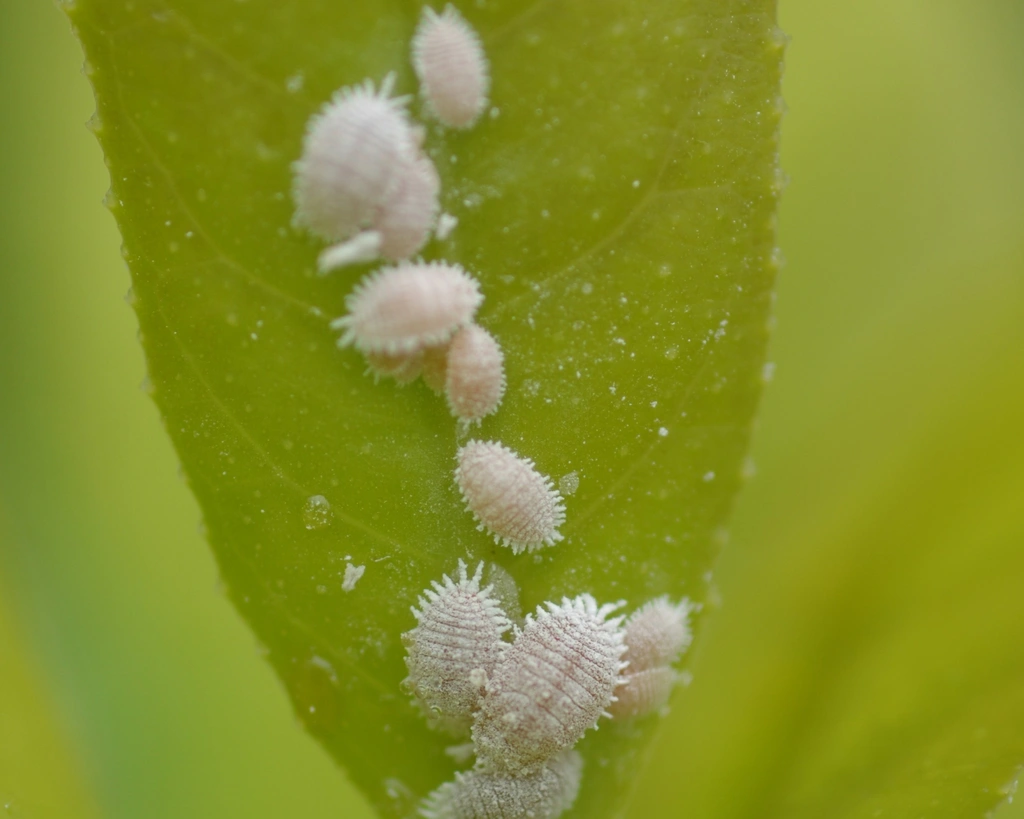
2. Mealybugs
Appearance: Small white fuzzy insects with a cotton-like appearance. Generally found on more succulent foliage, but can affect all plants in your garden.
Damage: Mealybugs suck the sap from plants and leave a shiny, sticky honeydew on the surface. This can attract ants, slow plant growth, and cause leaf drop.
Treatment: Insecticidal spray once per week until treated. To quickly kill visible ones, you can soak a cotton round or q-tip with rubbing alcohol and wipe them off in addition to the spray.
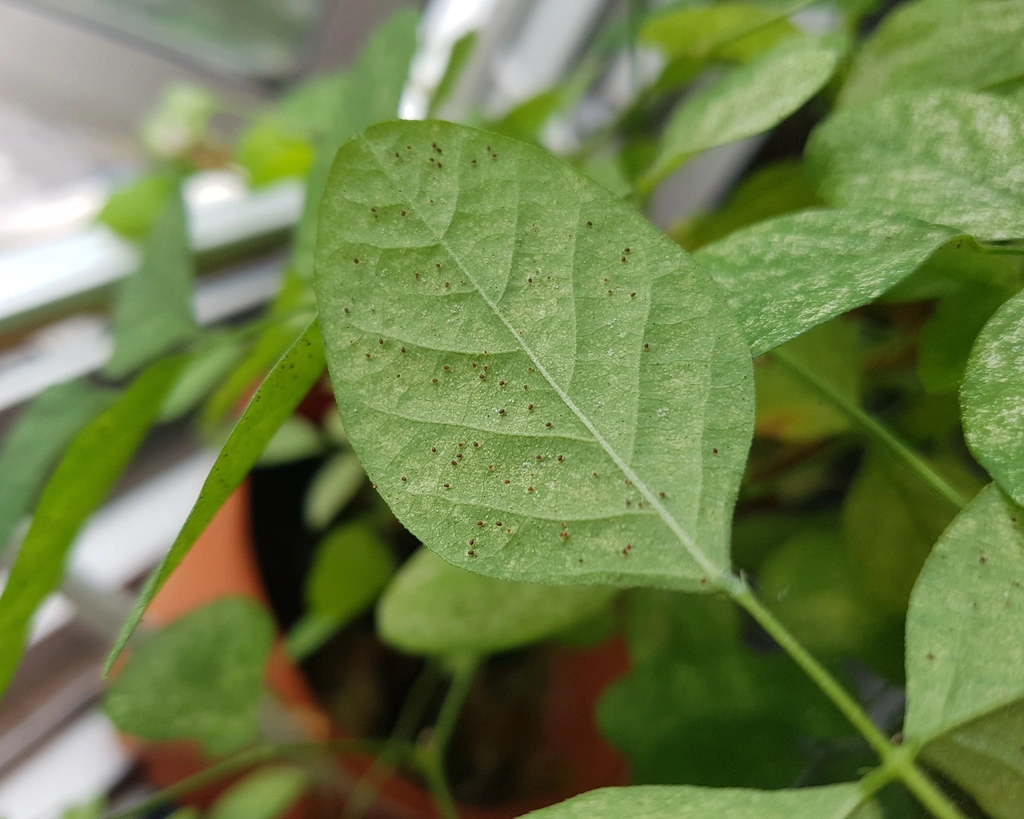
3. Spider Mites
Appearance: Spider mites can be difficult to see due to their small size. They are usually black or red and produce a white dusty coating with webbing in between the foliage, stems and on the soil surface.
Damage: First signs of damage will be spotted dots on the leaves, often a bronze colour. They will slow plant growth and dry out leaves.
Treatment: Insecticidal spray once per week until treated.
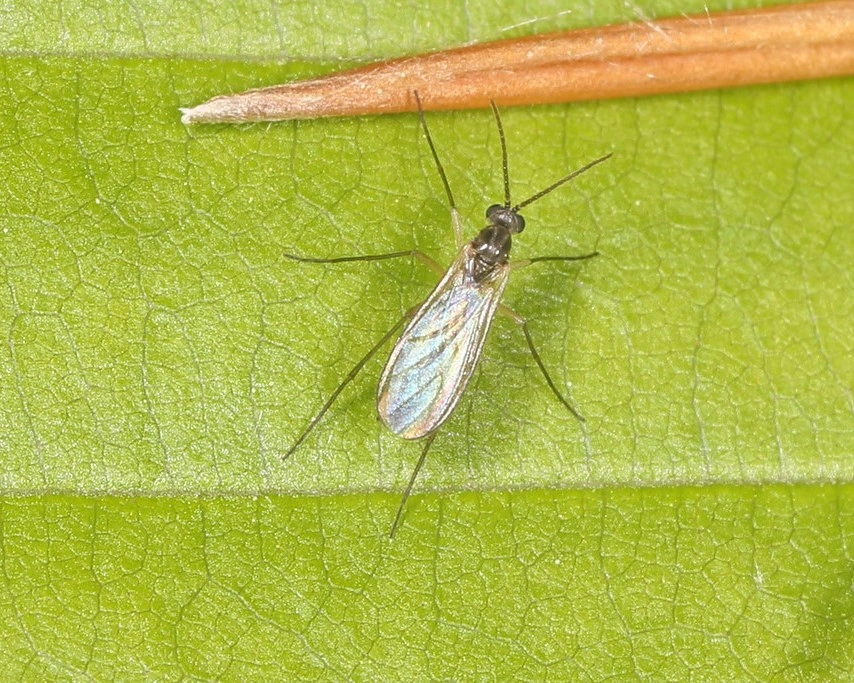
4. Fungus Gnats
Appearance: These small black insects are often mistaken for fruit flies. They can be found buzzing around the foliage of your plant, and on the soil surface.
Damage: While the adult gnats do not cause damage to plants, they are primarily an annoyance. It is important however to stop them from reproducing to prevent their larvae from damaging the roots of the plant and stunting growth.
Treatment: Insecticidal spray once per week until treated. Fungus gnats love moisture, so during treatment it is best to reduce watering frequency. Sprinkling the surface of the soil with cinnamon is an effective deterrent for reproducing in the soil.
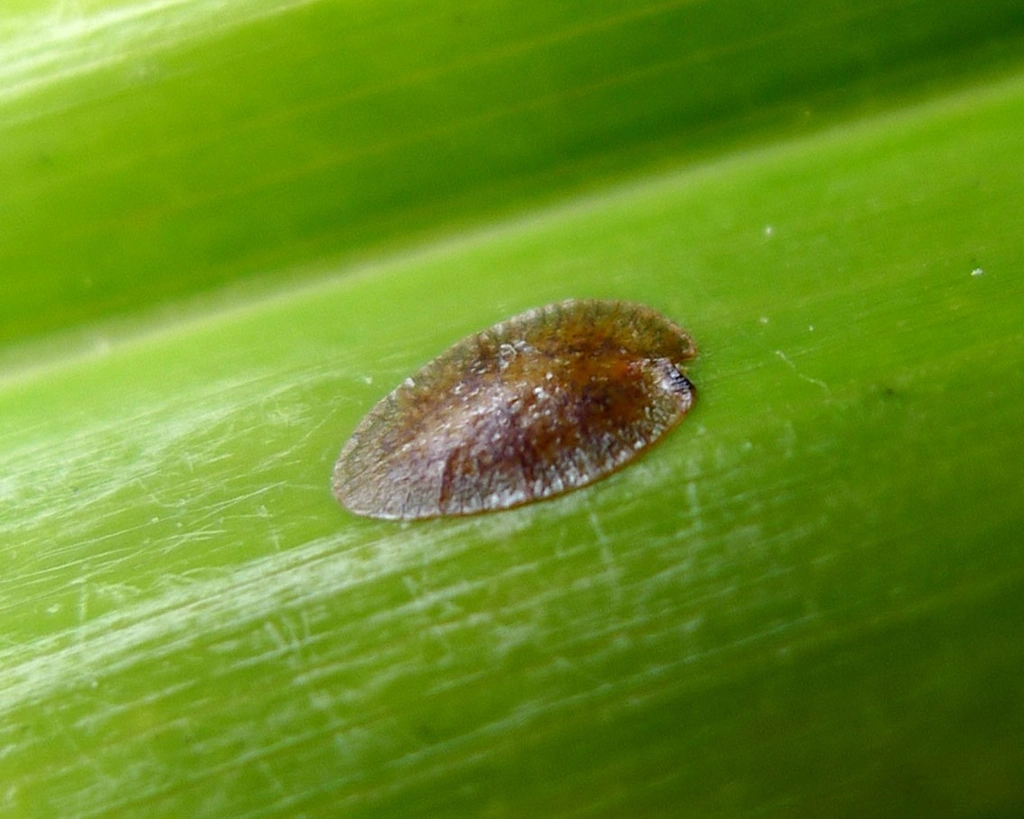
5. Brownscale
Appearance: These small round brown insects produce a shiny, sticky honeydew covering the leaves.
Damage: The honeydew produced by this insect can attract other insects such as ants. You may also notice black sooty mold, and yellowing leaves.
Treatment: Insecticidal spray once per week until treated.
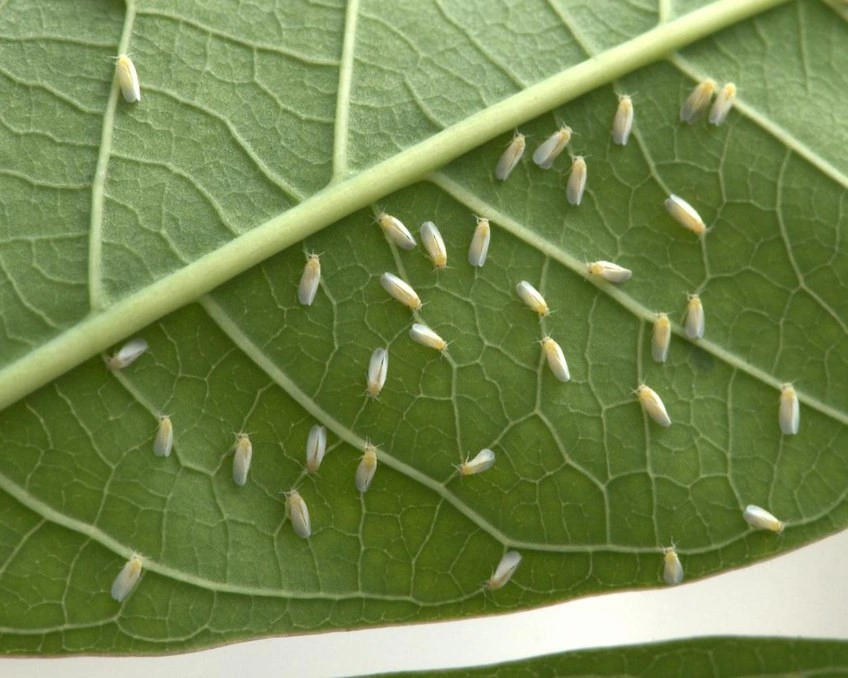
6. Whitefly
Appearance: This one is self explanatory! Whitefly appears as a small white fly. and sucks the sap from the plant stems, removing nutrients from the plant.
Damage: Whitefly sucks the sap from the plant stems, removing nutrients from the plant. They also produce sticky honeydew, which often develops into black sooty mold. You may notice yellowing leaves or dried leaves that will drop.
Treatment: Insecticidal spray once per week until treated.
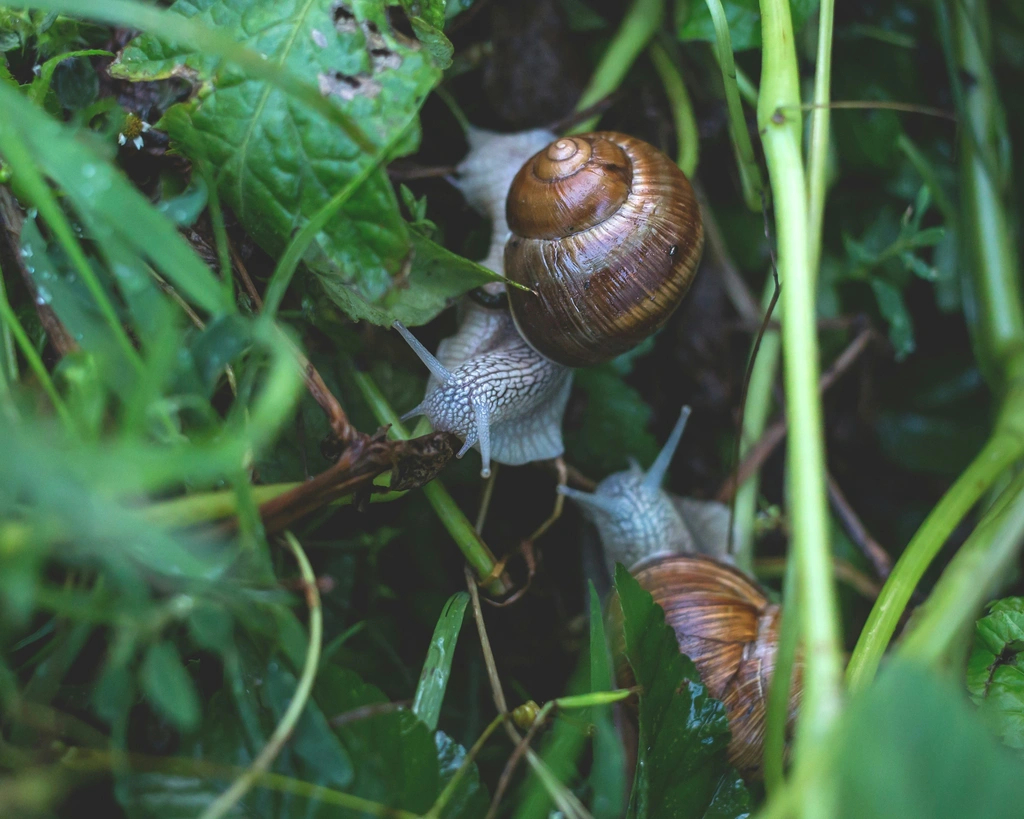
7. Slugs & Snails
Appearance: Snails and slugs both have a soft mushy body, with snails having the addition of a hard shell. They both leave a trace of mucus where they travel.
Damage: Snails and slugs are leaf eating insects. They create irregular holes with smooth edges on leaves and flowers. (Similar to when you take a bite out of a sandwich!)
Treatment: While a horticultural spray won’t remove slugs and snails from the garden, a drying liquid copper, or copper tape can be a successful treatment, as they dont like to be around copper.
A preventative approach would be to plant slug and snail resistant plants such as:
Woody shrubs and trees
Fragrant plants high in resin
Plants with fuzzy leaves
Mixing these slug and snail resistant plants with vulnerable plants can also help deter them from more vulnerable plants.
Pro Tip: Elevating your younger plants will naturally deter them as they prefer the easy route to plants and will naturally be attracted to plants closer to the ground. Once your plants have grown larger and can withstand more potential damage, you can plant them in the ground or leave them potted on the ground.

